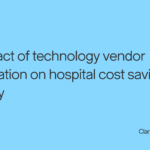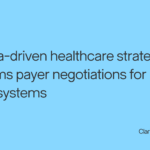Social determinants of health (SDoH) play a significant role in the overall health and well-being of individuals and communities. When building provider networks, it is crucial to include providers who can assess and address social determinants to ensure that care is equitable, patient-centered, and effective in improving health outcomes and reducing healthcare disparities. Social determinants of health (SDoH) are the conditions in the environments where people are born, live, learn, work, play, worship, and age. A robust body of research suggests that SDoH affect a range of health, quality of life, and risk outcomes. The US Department of Health and Human Services breaks SDoH into five categories: An effective provider network should offer patient-centered care that acknowledges the unique needs and circumstances of each individual. In addition to meeting adequacy, accessibility, and quality requirements, network strategy leaders are increasingly looking to strike a balance between size and comprehensiveness. Using SDoH-informed provider performance analytics, health plans can analyze the performance of providers in a given market based on the specific needs of their members. They can use these insights to create specialized networks to ensure the network meets the specific healthcare needs of members, including linguistic, cultural, and age-related considerations. Payers can simultaneously narrow a given network to exclude providers with low performance while expanding to include specialty coverage, mental health and behavioral health services, or specialized SDoH programs. With an SDoH-informed network, payers and providers can work together to ensure that patients receive not only medical care but also the social and community services they require. SDoH insights offer a deeper understanding of patient backgrounds, needs, and potential healthcare outcomes. Recognizing SDoH and addressing them can enhance patient engagement, empower patients to take more ownership over their own health, and ultimately, improve outcomes. When members see that their healthcare providers are committed to reducing disparities and promoting equity, they are more likely to engage in care. Further, if payers collaborate with community organizations and provide resources to address SDoH, it can foster community engagement; members may become more involved in local programs and support systems that improve their overall health and well-being. Addressing SDoH often involves providing education and resources to help members make informed decisions about their health. Educated and empowered members are more likely to engage in preventive care and manage their health proactively. On the flip side, knowing how to identify and respond to factors that may influence a patient’s health requires training. Health plans should invest in training and education to develop cultural competence in their provider partners and staff. Having a strong network of providers with proven cultural competency will allow members to feel more seen and cared for, driving engagement and trust. Addressing SDoH can lead to cost savings in the long run. Preventing health issues and promoting healthier behaviors through SDoH interventions can reduce the need for costly medical treatments and hospitalizations. Contracting with and incentivizing providers to focus on preventative care and early interventions that can prevent more serious health issues will drive healthier populations. Unfortunately, addressing SDoH requires investments in staff, infrastructure, and community partnerships. Budget constraints can make it difficult to allocate resources to SDoH initiatives. Access to accurate and comprehensive data on SDoH can be limited. Without robust data, it’s challenging to identify specific needs and measure the impact of interventions effectively. Additionally, many healthcare reimbursement models are based on treating acute illness rather than addressing prevention and SDoH. Aligning financial incentives with SDoH initiatives can be challenging within the existing healthcare financing framework. Fortunately, several innovations in recent years have made it easier for health plans to build provider networks that take social determinants of health into account. These innovations help health plans identify and collaborate with providers who are equipped to address SDoH factors in the care they provide. For example, These innovations enable healthcare payers to build more comprehensive provider networks that not only offer medical care supports more holistic, patient-centered care and helps address health disparities. With so much SDoH data in so many places, there is a growing need for tools to help manage and visualize it. Advanced data analytics and AI tools can help health plans identify patterns and trends related to SDoH in their member populations. Robust data analytics platforms can collect, process, analyze, and visualize vast amounts of SDoH data to derive actionable insights, helping better to identify areas of need and opportunity within networks. While many healthcare organizations often derive SDoH insights from their data, there is also a significant benefit to using third-party SDoH data aggregators. Third-party data tools compile and curate SDoH data from various sources, providing payers with a rich and diverse set of information to inform their decisions. SDoH play a significant role in the overall health and well-being of individuals and communities. Factors like income, housing stability, access to healthy food, and education level can affect a person’s overall health, making it imperative to include providers in the network who can address these issues through social and community-based services. As healthcare shifts toward value-based care models, where reimbursement is tied to outcomes and patient satisfaction, addressing SDoH becomes more critical. Improving social determinants can lead to better outcomes and a higher quality of care, aligning with value-based care goals. While there are barriers to addressing SDoH, data analytics platforms, payment innovations, and education can help push the industry forward.Understanding the influence of SDoH
For healthcare payers, the benefits of building SDoH-informed provider networks are multifold:
Quantity and Quality:
Member Engagement and Outcomes:
Cost Savings:
Barriers to addressing SDoH:
Innovations for SDoH-informed provider networks:
Tools and Tactics: Leveraging SDoH insights for network optimization
Looking Forward: The future of provider networks and SDoH
- Author Details





